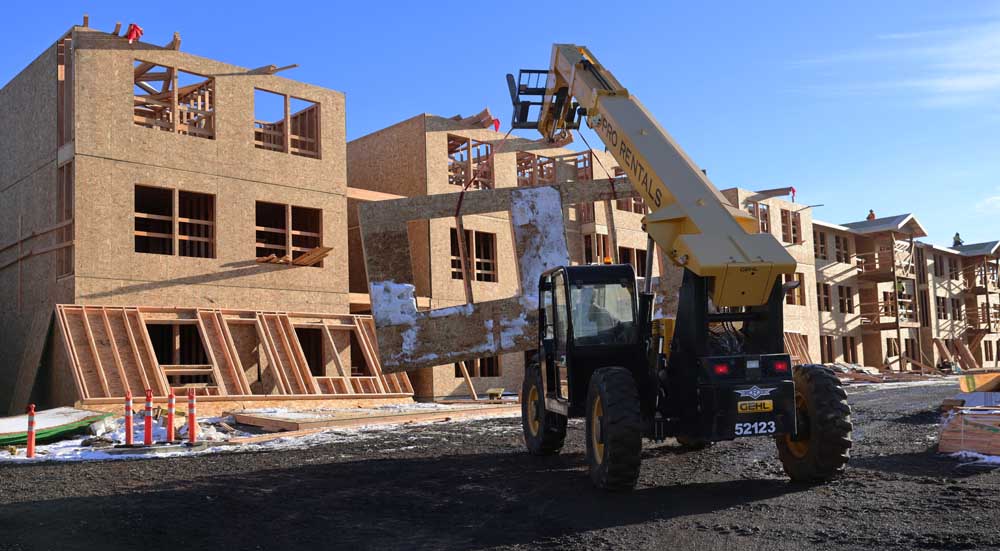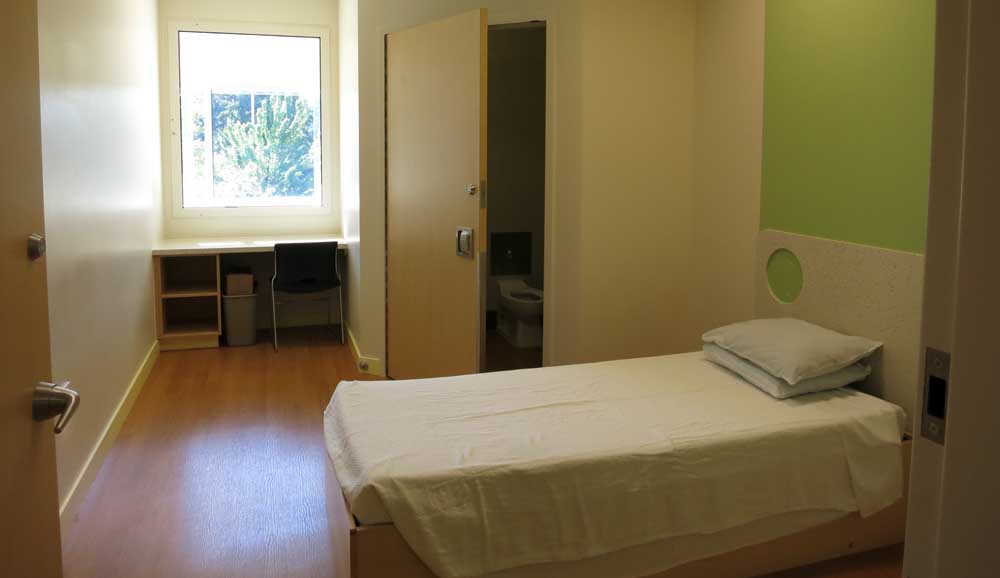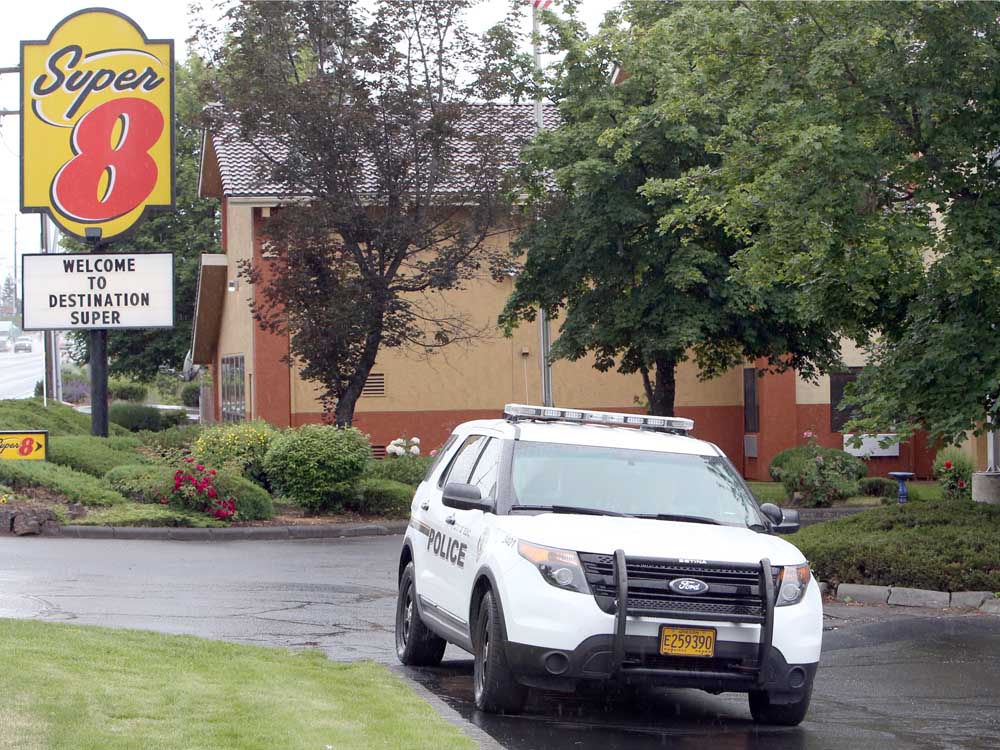Bend crafts policy to lower rents with urban renewal incentives
Published 5:30 am Thursday, August 1, 2024

- This 2022 file photo shows construction of an apartment complex on southeast Reed Market Road in Bend.
Going back nearly 20 years, Bend has carved out three chunks of the city where property taxes are captured to pay for projects in those areas, a process called tax increment financing, TIF, or urban renewal.
More of these areas could dot the city in the coming years if the Bend City Council approves a new policy later this month intended to lower rents and create higher-paying jobs with incentives to developers using urban renewal.
The policy, which was presented to two city subcommittees this week, is Bend’s latest effort to combat rising rental prices that are now among the most expensive in the state.
“We know that the market is naturally not producing affordability,” said Jonathan Taylor, the city’s urban renewal manager. “In order to incentivize something that’s not naturally occurring, we’re going to use urban renewal to help do that.”
With urban renewal, property taxes on new developments are captured and reinvested in specific ways, rather than sent to their usual taxing districts.
According to Taylor, Bend is the second city in Oregon, behind Salem, to use the tax tool to help lower rents, and is doing so more aggressively than the capital city.
With the new proposed policy, property taxes on certain housing developments — those with a certain level of affordability — would go back to its developer in the form of an annual rebate.
The policy would offer an 80% rebate on property taxes for new housing developments where at least 15% are rented at a cost attainable to people making less than the area median income.
Similarly, developments in certain areas of the city would get tax breaks for creating at least five jobs with an average salary of $72,000 — the income needed for an individual to afford rent without a cost burden, according to data from the city of Bend.
While in the program, owners would have to keep rental increases below the maximum allowed by the state.
The details could still change before the City Council sees the policy in a work session on Aug. 7. But members of the council expressed support for the current parameters and objectives of the policy at a subcommittee meeting on Monday.
Many renters cost-burdened
The U.S. Department of Housing and Urban Development defines “cost-burdened” as an individual or family spending one-third or more of their income on rent. In Bend, individuals making about $66,000 per year, or just below the median income, fit into this category because studio apartments cost $1,800 per month on average, according to U.S. Census Bureau data presented by Taylor.
That’s the affordability threshold new developments must meet to get the tax rebate. But the city has signaled that it will place an emphasis on developments that go beyond that level, while keeping a close eye on the bottom line.
“I don’t want to see a 7-to1-profit return on this,” Taylor told the city subcommittee. “I want us to get as much equitable development out of it as possible.”
The Bend Urban Renewal Agency, which is made up of the City Council, will have the power to negotiate with developers to get greater levels of affordability.
So far, Taylor said, the city has received good feedback from developers about the program. Katy Brooks, CEO of the Bend Chamber of Commerce, said the chamber is supportive of the new policy.
“These incentives can be deployed across the city on more projects, rather than concentrating on one or two,” she said. “The fundamental fact is that building housing that is attainable by most of the workforce in Bend simply cannot happen without some sort of funding assistance and joint effort.
The city’s three existing urban renewal districts span a total of more than 1,000 acres.
If the proposed housing lies outside one of those areas, the city will create a new miniature urban renewal area — nicknamed “tiny TIF” — encompassing only the development. Some could be as small as one parcel, and none would be larger than 20 acres, Taylor said.
New development areas must meet the state’s criteria for urban renewal, which includes “blighted areas” unfit for community use.
The process has lots of time for public input, Taylor said.
Differences from past program
Another tax break program, the multiple-unit tax exemption program, was scrutinized in February when the City Council approved a $10.6 million tax exemption for the Jackstraw building, a 313-unit apartment and commercial building. The city soon suspended the program to reevaluate.
Read more
Bend City Council approves Jackstraw tax exemption amid scrutiny, confusion
Mike Riley, the lone councilor to vote against that exemption, said he feels more confident in the framework of the proposed urban renewal policy. Whereas the previous exemption policy was a way to boost housing supply, this one is a way to also control affordability, he said.
Riley said he is still deciding on whether he wants to bump down the proposed income threshold.
“I want to make sure that when we’re using public dollars, we’re delivering in a way that helps the people who need it most,” he said.
City Councilor Barb Campbell said as a member of the urban renewal agency she’ll be looking for projects that would not be economically feasible without the tax break.
“That is where it becomes more art than science, is trying to determine how many tax dollars do we need to use — and not a single dollar more.”
To meet 2030 demand, Bend needs a little more than 1,000 new units of housing attainable to people with incomes below the median, according to an analysis by the city of Bend.
According to Taylor, developments constructed since 2021 have 14% higher rents than the market average.
With demand still surging, the housing market won’t be able to adjust to meet what many households can afford, said Tony Levison, a longtime real estate agent in Bend.
“Housing production incentives make developments happen regardless of market demand fluctuations. Bend needs policies that encourage more housing for less cost.”







